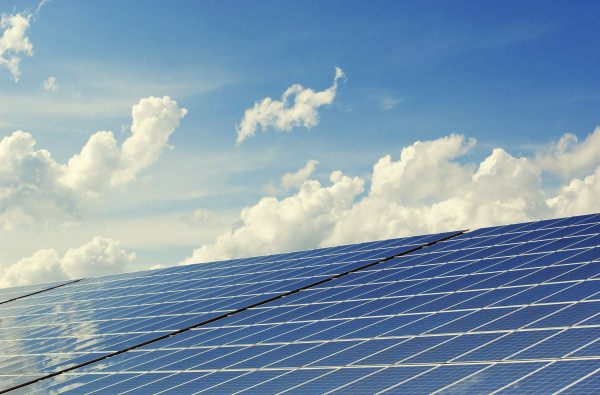

Despite a recent, relatively modest recovery in equities seen in the latter half of this summer, the capital markets will have left many investors bemused for the most part of 2022, with one of the worst-performing first halves on record, and trillions knocked off global stocks.
Coupled with painfully high inflation, lacklustre growth, tightening monetary policy and the gloom of recession looming, investors seeking yield have had to look outside of equities and bonds for a reliable return. This is where alternative investment vehicles are making their mark.
Investments in alternative, private, cash-generating, long-term inflation-linked assets, including those assets that are driving decarbonisation and the energy transition, have fared better.
Indeed, investment trusts, which have been described as funding a new wave of innovation in a period of rapid technological change, are the chosen vehicle for many today.
They can provide those much-desired uncorrelated returns that the public capital markets are not delivering, and in 2022 recorded their best year for dividend payments.
One of the areas they focus on today is the energy transition. It is no secret that we are amid a worsening energy pricing emergency and there is an urgent need to support a more resilient and efficient energy system.
What is more, if we are to realise the UK’s commitment to achieving net zero by 2050, we need to significantly increase investment across the whole of the UK energy system by up to £50bn a year by 2030 as part of the energy transition.
For this to be achieved, major, concerted, and holistic investment is required across all segments of the energy system.
The decarbonisation challenge
Despite halving our overall greenhouse gas emissions profile in the past thirty years, we still have a long way to go to achieving net zero, and our demand for electricity is rapidly increasing.
As our lives become increasingly digitised, data storage and transmission requirements rise, public transit electrifies, and electric vehicles gradually replace the combustion engine, the energy driving this must come from somewhere.
Indeed, the UK emitted 405.5mn tonnes of CO2 in 2020, 81mn (20 per cent) from the energy sector alone, and it has been estimated that our electricity consumption will triple by 2050.
The International Energy Agency has advised in its decarbonisation roadmap that the radical transformation of global energy systems required to achieve net zero CO2 emissions is dependent on a major expansion in the volume of investment and a major pivot in where that investment is deployed, with a core focus of this being clean and energy efficient technologies.
From a global perspective, the UN’s Net Zero Financing Roadmap, produced in tandem with COP26 and in line with the IEA’s roadmap, proposes that between 2021 and 2030, about $32 trn investment is needed to put the world on the path to net zero.
These numbers sound almost too staggering to comprehend, but when considering that 70 per cent of the financing required will need to come from the private sector, the opportunity for investors is manifold and significant.
Through direct capital investment in decarbonisation projects and assets, it becomes clear why well positioned, specialist investment trusts and companies are such an important vehicle to drive this forward.
Diversification of a different kind
Of crucial importance here is not just the value of the capital needed, but where and how the capital is deployed and the subsequent development it facilitates.
A balanced, holistic approach is critical to ensure a smooth transition and manage energy security in the medium to long term, as well as helping to secure reliable returns that are balanced by varied asset classes more likely to provide predictable cash flow.
The IEA’s roadmap broadly segments this approach across three pillars. These are: renewable and low-carbon energy generation; energy efficiency through storage and improved transmission; and reduced consumption through on-site efficiencies, behavioural change and carbon capture and utilisation. This therefore should be reflected in any energy transition strategy.
To put this in simpler terms, to reach net zero, no one element of the energy system can be prioritised over the others.
For instance, vast offshore wind farms, such as the newly commercialised Hornsea Two, now the largest in the world and just off the East Anglian coast, cannot properly contribute to the energy transition if we do not have efficient transmission infrastructure to reduce energy loss and the adequate utility storage to account for weather variability and reduce curtailment.
In 2021 alone, enough wind energy to power almost 1mn homes for a year was lost though infrastructure inefficiencies, at a cost of £507mn, according to LCP, a consultancy. This is expected to rise to £1bn by 2025, so action must be taken.
How does this look in practice? First, decentralised, low-carbon energy generation should be delivered through renewable sources, such as hydroelectric power, wind, and solar, ideally located as close as possible to centres of demand.
Second, we need to invest in adequate distribution and storage, which will be needed to balance the often volatile and unpredictable energy supply.
Third, we need to reduce demand from the grid network from the consumer, be this in a residential, commercial or industrial setting. This can be achieved through energy saving measures, such as carbon capture utilisation, heat and waste recovery, or combined heat and power.
The need to accelerate the transition towards a lower-carbon, more resilient and efficient energy system is gathering momentum. With $2,600bn (£2,219bn) annual capital investment needed right now, and with the economics of low-carbon energy investment rapidly improving, investment opportunities are set to increase exponentially.
It is absolutely essential that we support the transition to net zero by investing holistically across the energy sector. This is key because by targeting a high level of diversification, you ensure you are not dependent upon a single area of the market or specific technology, thereby mitigating against volatile peaks and troughs while targeting sustainable returns.
Furthermore, investing in projects with retail price index inflation-linked cash flows, such as our hydro-electric assets, and long-term contracts with less exposure to market volatility, can provide investors with diversification beyond the traditional bond and equities markets.
So, it is an opportune time to invest in a diversified portfolio that benefits from an inflationary environment and that seeks to respond to the challenge of net zero while improving energy security and lowering energy costs for businesses.
Jonathan Hick is investment director and fund manager of Triple Point Energy Transition, formerly the Triple Point Energy Efficiency Infrastructure Company




